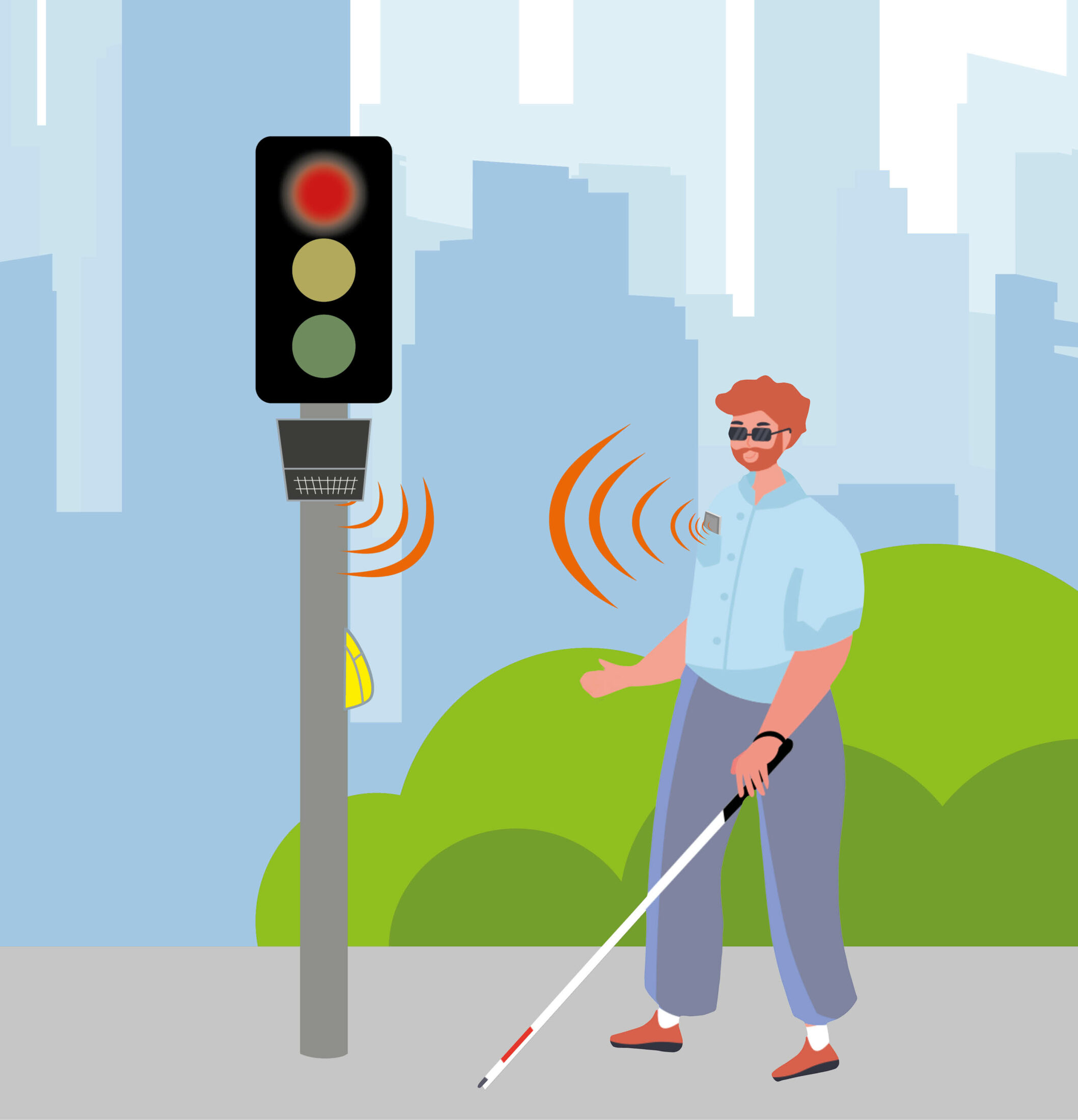People with visual impairments often have difficulty navigating traffic safely. One of the biggest challenges for them is crossing roads at traffic lights. This is where traffic lights equipped for the blind come into play, helping them to cross the road safely. They are equipped with acoustic and tactile signaling devices that enable blind and visually impaired people to recognize the traffic lights and cross the streets safely. Optimal sound alignment, as provided by RTB's acoustics, is essential for optimal guidance. This also significantly limits noise pollution for local residents.
An even more effective, on-demand solution for improving the blindness and accessibility of traffic lights is LOC.id technology. LOC.id is an app-based system that communicates using the Bluetooth transmission standard. Blind and visually impaired people with an app installed on their smartphone are recognized at LOC.id-equipped traffic lights and the orientation tones are individually adjusted to the user and the distance to the facility. This helps to avoid unnecessary noise pollution of the surrounding area. In addition, the release signal is requested automatically, manual intervention is no longer necessary.
Conclusion:
Traffic light systems equipped for the blind with LOC.id technology are an innovative solution for improving road safety. The integration of LOC.id enables individual and needs-based support for blind and visually impaired people and helps them to participate safely and independently in road traffic. The use of technologies such as LOC.id is an important step towards promoting accessibility and inclusion for people with visual impairments.
Post: RTB GmbH & Co. KG

